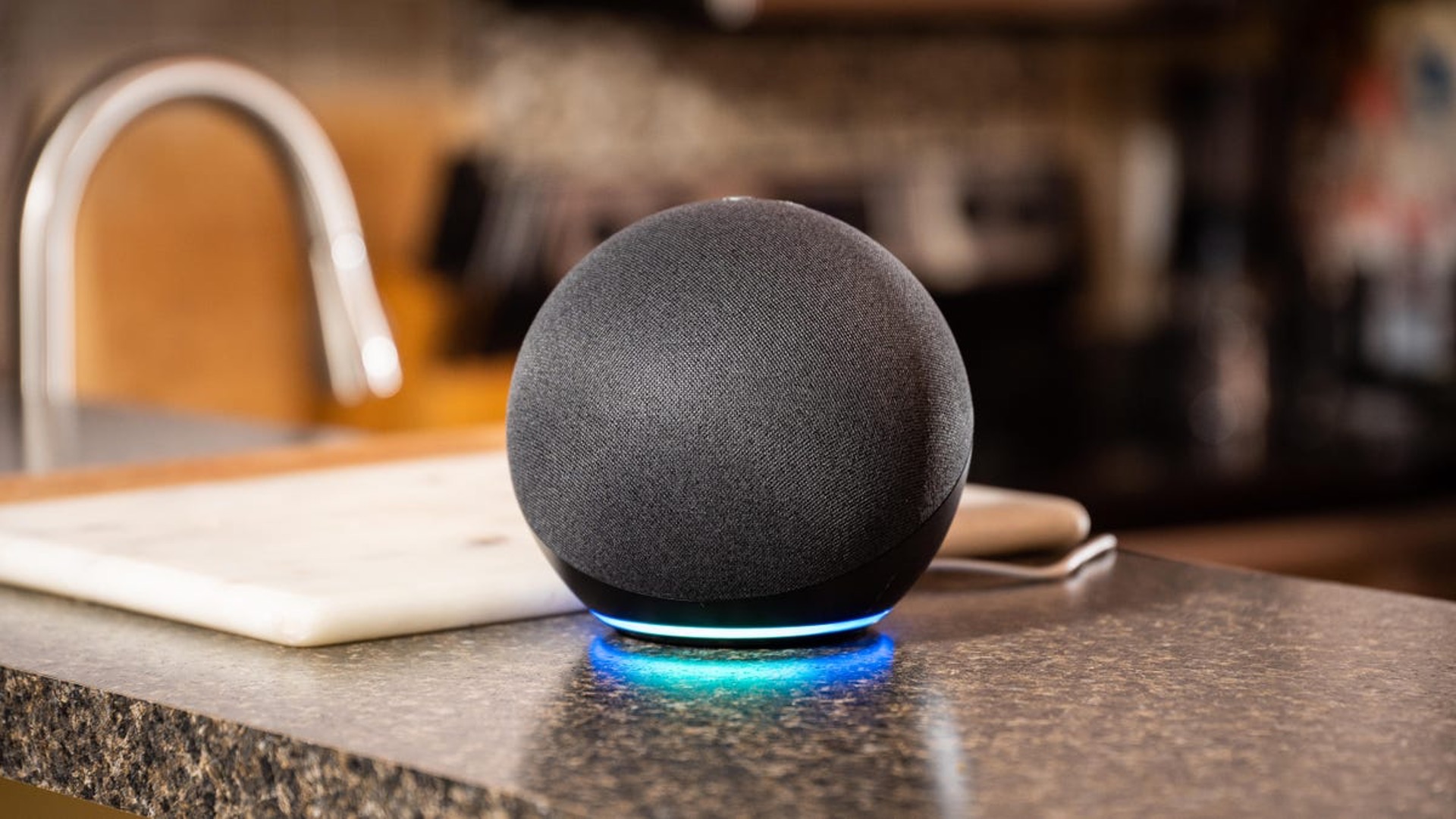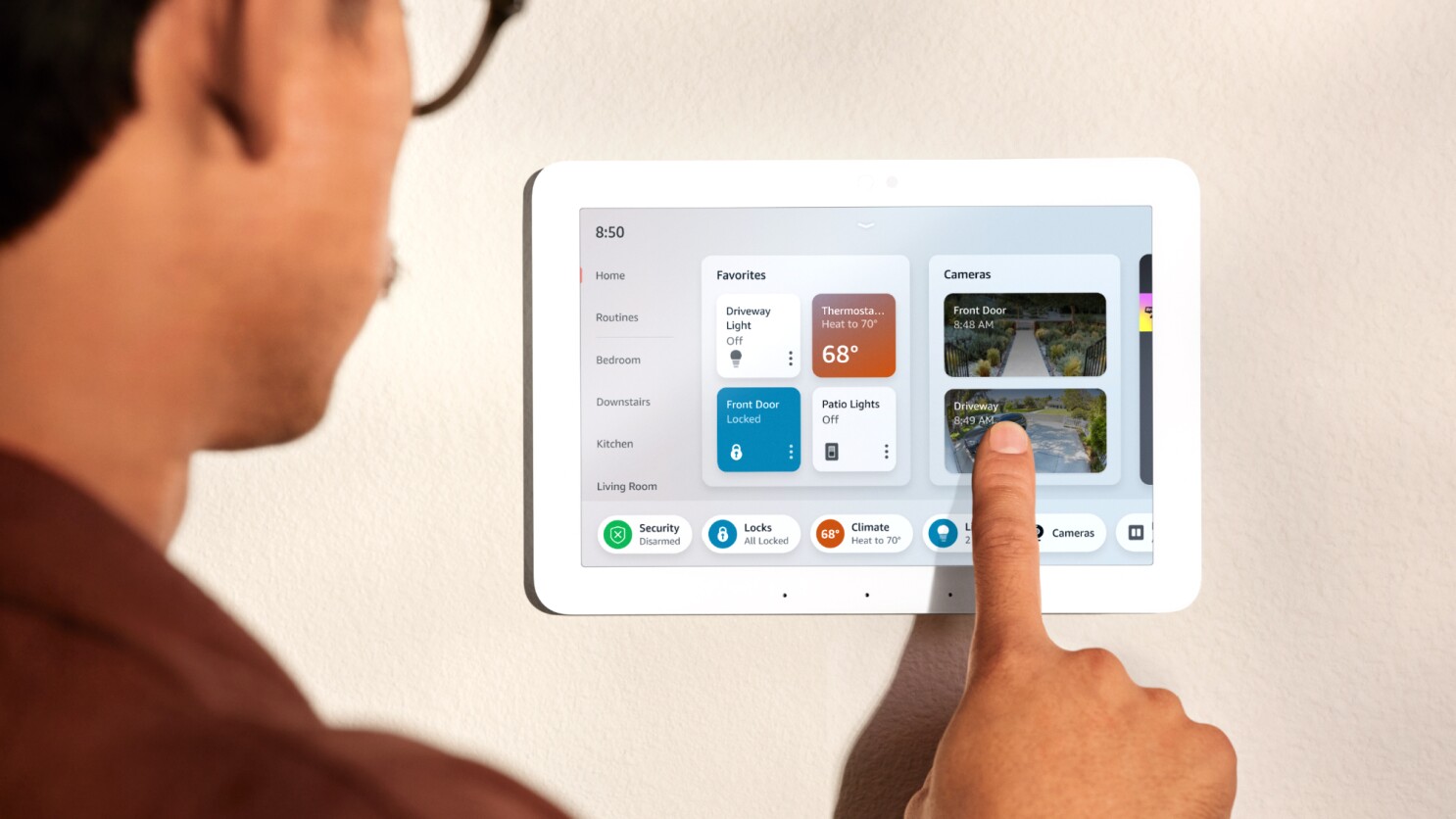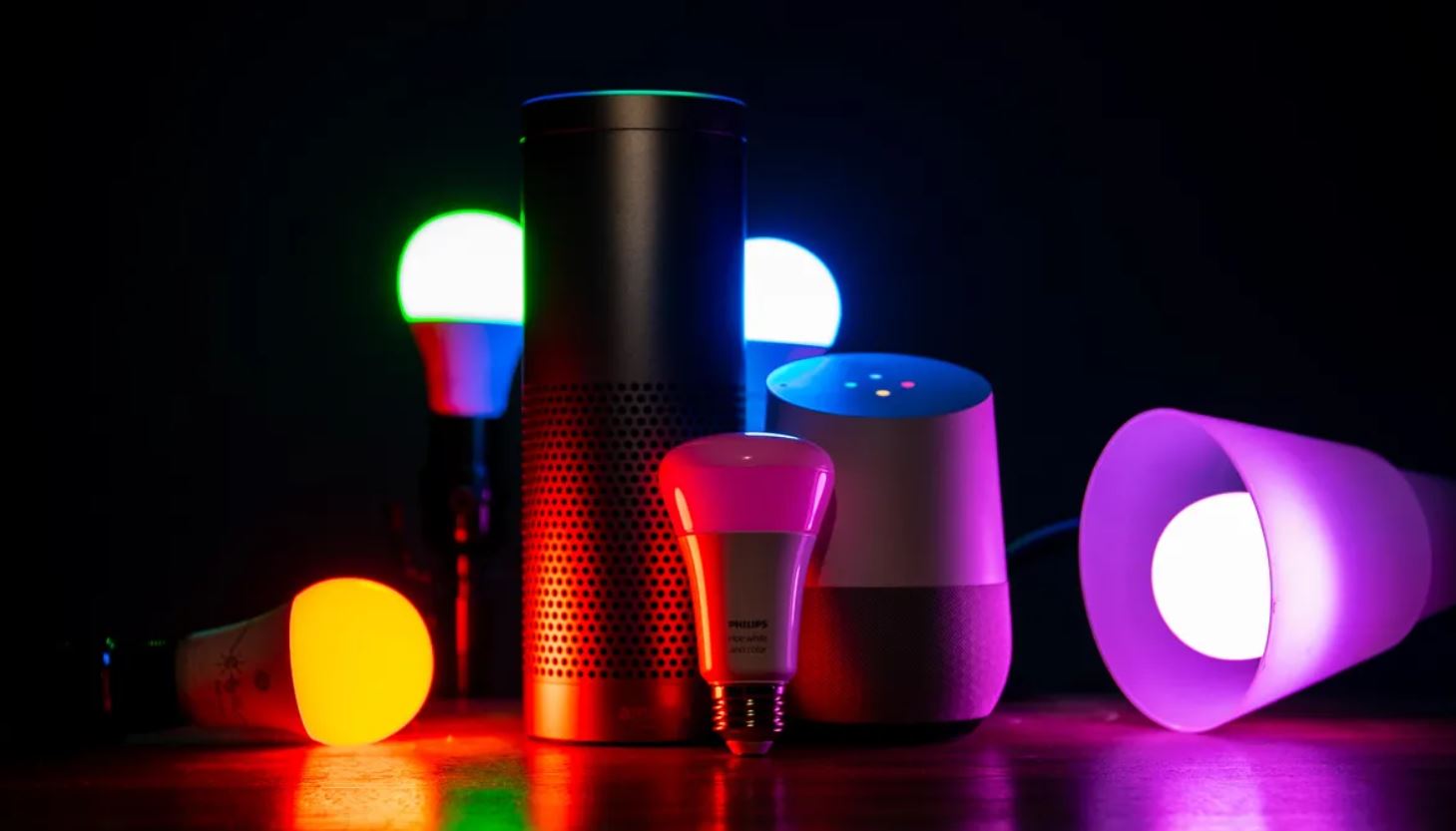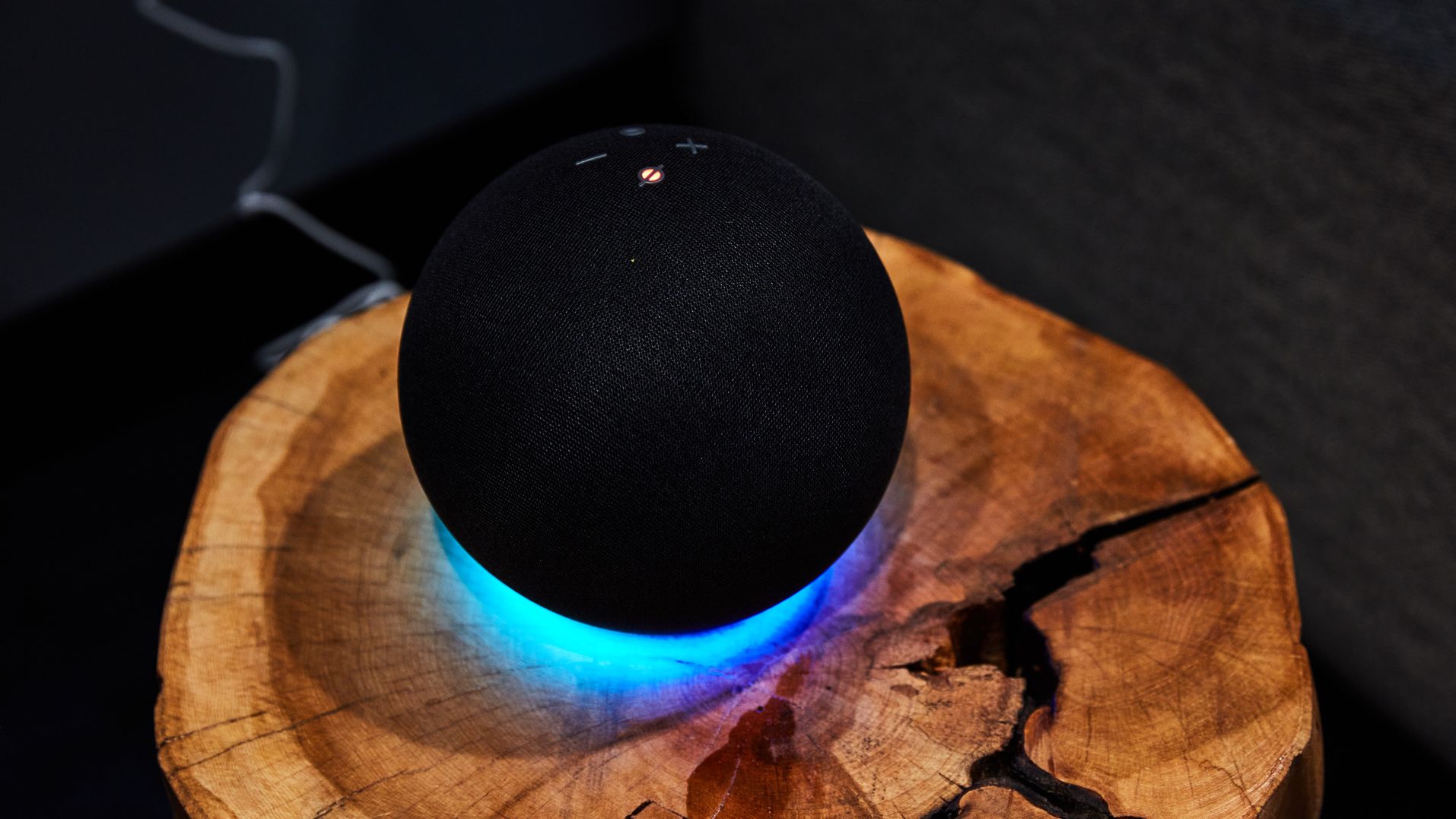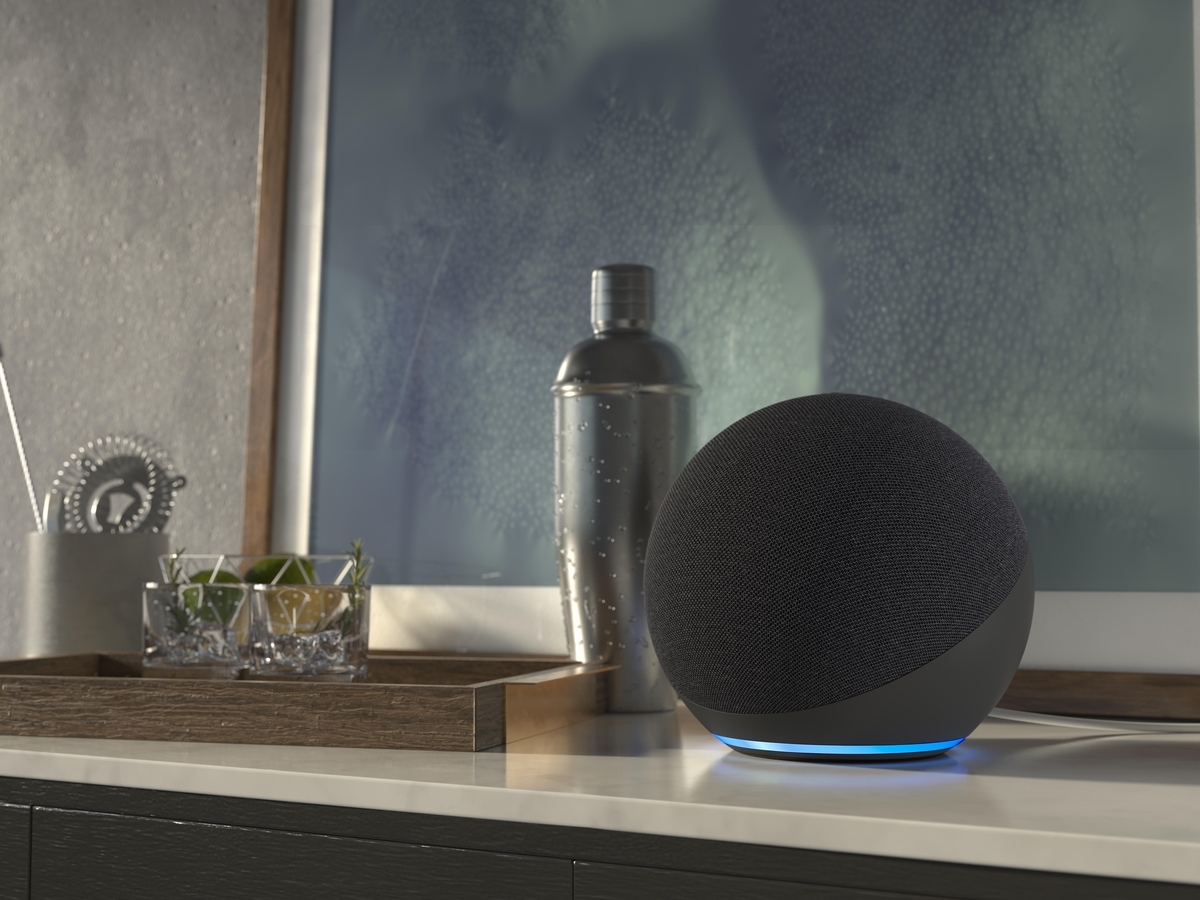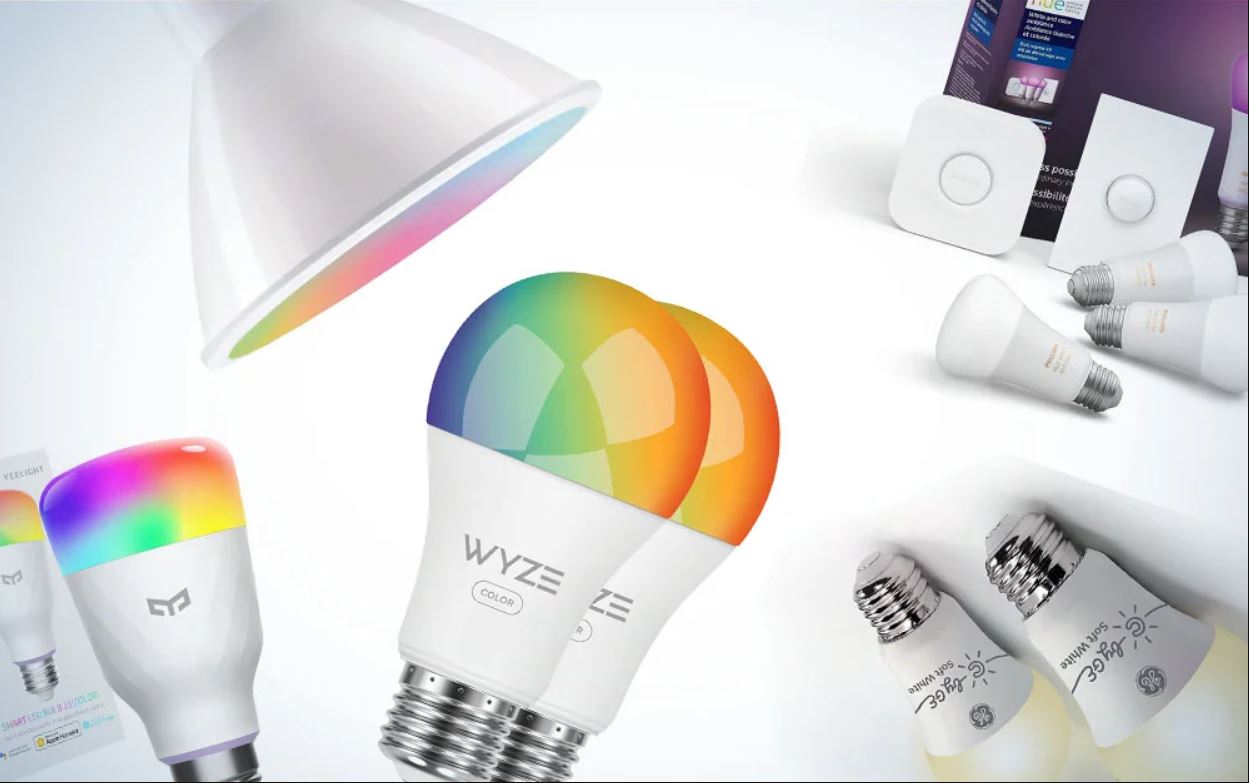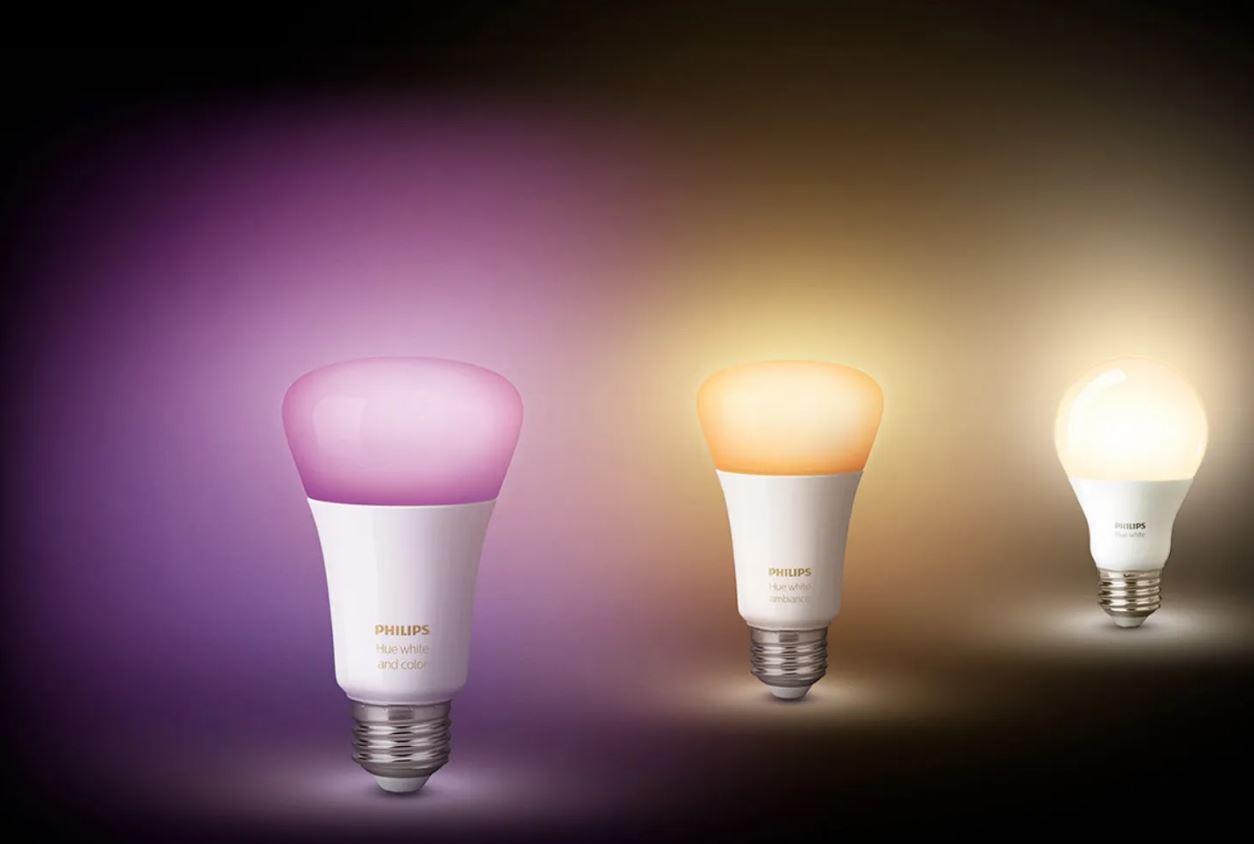Introduction
Welcome to the exciting world of smart home technology! The advent of smart home hubs has revolutionized the way we interact with our homes, making them more connected, convenient, and efficient than ever before. And when you combine the power of a smart home hub with the intelligence of Amazon’s virtual assistant, Alexa, you get a truly transformative experience.
A smart home hub acts as the central control point for all your smart devices, allowing you to manage and automate various aspects of your home with just a few taps or voice commands. And with Alexa as the brain behind it all, you can control your smart home hub using natural language, making it feel like you have your very own personal assistant at your beck and call.
Whether you’re a tech enthusiast looking to make your home smarter or someone who simply wants to make their life easier and more convenient, a smart home hub with Alexa is the perfect solution. In this article, we’ll dive into the world of smart home hubs with Alexa, exploring what they are, how they work, and the numerous benefits they bring to your everyday life.
So, if you’re ready to unlock the potential of your home and embrace the future of intelligent living, let’s delve deeper into the realm of smart home hubs with Alexa, and discover how they can transform your home into a truly smart and connected space.
What is a Smart Home Hub?
A smart home hub is a central device that connects and controls all the smart devices in your home. It acts as a bridge between different smart devices, allowing them to communicate and work together seamlessly. Think of it as the command center of your smart home, where you can manage, monitor, and automate various aspects of your home’s functionality.
Smart home hubs come equipped with built-in wireless technologies like Wi-Fi, Bluetooth, Z-Wave, or Zigbee, which enable them to communicate with a wide range of smart devices such as lights, thermostats, door locks, cameras, and more. They provide a unified interface or app that allows you to control and monitor these devices from a single platform, whether it’s a smartphone, tablet, or a dedicated hub device.
The primary purpose of a smart home hub is to simplify and streamline the management of your smart devices. Instead of opening multiple apps or dealing with different control interfaces, you can control all your devices using a single hub. This not only saves you time and effort but also eliminates the confusion that can arise from managing multiple device-specific apps or interfaces.
Moreover, a smart home hub enables you to create automation routines or scenes, where multiple devices can be triggered simultaneously based on a specific condition or event. For example, you can set up a “Goodnight” scene that turns off the lights, locks the doors, and adjusts the thermostat with a single voice command or button press.
Another key feature of smart home hubs is their ability to integrate with voice assistants like Amazon’s Alexa, Apple’s Siri, or Google Assistant. This allows you to control your smart devices using voice commands, further enhancing the convenience and hands-free experience.
In summary, a smart home hub is a central device that connects and controls all the smart devices in your home, providing a unified interface and automation capabilities. It simplifies the management of your smart home, eliminates the need for multiple apps, and allows for seamless integration with voice assistants for hands-free control.
What is Alexa?
Alexa is Amazon’s voice-controlled virtual assistant that powers a multitude of smart devices, including smart home hubs. With Alexa, you can use your voice to perform a wide range of tasks, from playing music and setting reminders to controlling smart home devices and even ordering products online.
Developed by Amazon’s Lab126, Alexa is powered by advanced natural language processing and machine learning algorithms, allowing it to understand and respond to human commands in a conversational manner. It can recognize and interpret various voice commands, making it easy for users to interact with their devices without the need for complex commands or specific phrases.
Alexa is designed to constantly adapt and improve through machine learning, which means it learns from user interactions and becomes more accurate and personalized over time. It can recognize different voices, understand speech nuances, and even provide personalized responses based on a user’s preferences and history.
Alexa’s capabilities extend beyond just voice commands. It is also equipped with Alexa Skills, which are special applications that allow Alexa to perform additional functions beyond its built-in features. Developers can create and publish Alexa Skills, ranging from weather updates and news briefings to games and interactive experiences, further expanding the capabilities of the virtual assistant.
One of the key advantages of Alexa is its wide device compatibility. It can be integrated into a variety of smart devices, such as smart speakers, smart displays, and smart home hubs. This means that users can control and manage their smart devices using Alexa’s voice control capabilities, adding an extra layer of convenience to their connected home ecosystem.
Additionally, Alexa integrates with various third-party services and platforms, allowing users to access a wide range of functionalities. Whether it’s ordering food from a restaurant, checking the status of a flight, or even controlling smart home devices from different manufacturers, Alexa acts as a central hub that brings together multiple services and devices for a seamless user experience.
In summary, Alexa is Amazon’s virtual assistant that utilizes advanced natural language processing and machine learning to understand and respond to user commands. It can be integrated into various smart devices and offers a wide range of capabilities, including controlling smart home devices, providing personalized responses, and accessing third-party services through Alexa Skills.
How does a Smart Home Hub with Alexa work?
A smart home hub with Alexa brings together the power of a smart home hub and the intelligence of Amazon’s voice assistant, creating a seamless and intuitive smart home experience. The hub acts as the central control point for all your smart devices, while Alexa serves as the voice interface for controlling and managing those devices.
When you set up a smart home hub with Alexa, you first connect it to your home’s Wi-Fi network. This allows the hub to communicate with your smart devices and also enables it to access the internet for voice commands and other connected services. Once connected, you can begin adding compatible smart devices to your hub, such as smart lights, thermostats, plugs, and more.
The hub utilizes wireless protocols like Z-Wave, Zigbee, or Wi-Fi to communicate with your smart devices, and it acts as a bridge between these devices and your voice assistant. It will have a companion app or a web interface that allows you to configure and manage your devices, set up automation routines, and customize your smart home experience.
When it comes to interacting with your smart home hub with Alexa, you have several options. The most popular and convenient method is using voice commands. You can simply speak to your smart speaker or any device with built-in Alexa, such as a smartphone or smart display, and instruct Alexa to control your smart devices. For example, you can say “Alexa, turn off the lights” or “Alexa, set the thermostat to 72 degrees.”
The smart home hub with Alexa also offers a visual interface through devices like smart displays. These devices have screens that display additional information and provide a more interactive experience. You can use touch gestures or voice commands to control your devices or access other smart home features.
Behind the scenes, when you issue a voice command to Alexa, it is transmitted to the cloud for processing. The cloud-based Alexa service interprets your command and sends the appropriate instructions to the smart home hub. The hub then communicates with the respective smart devices, triggering the desired actions.
Another important aspect of a smart home hub with Alexa is its ability to create automation routines. Using the companion app, you can set up routines based on specific events or conditions. For example, you can create a morning routine that turns on the lights, adjusts the thermostat, and plays your favorite music when you say “Alexa, start my day.”
In summary, a smart home hub with Alexa works by connecting to your smart devices and acting as a central control point. You can control your devices through voice commands, a visual interface, or automation routines. Alexa serves as the voice interface, relaying your commands to the hub, which in turn communicates with the connected devices to perform the desired actions.
Benefits of using a Smart Home Hub with Alexa
Using a smart home hub with Alexa brings numerous benefits that enhance the convenience, comfort, and efficiency of your smart home ecosystem. Here are some key advantages:
1. Centralized Control: A smart home hub with Alexa provides a single interface to control all your smart devices. With Alexa as the voice assistant, you can easily manage and command your devices using natural language, simplifying the control process and eliminating the need for multiple apps or interfaces.
2. Hands-Free Convenience: Alexa’s voice control capabilities make it easy to control your smart devices without needing to physically interact with them. Whether you’re busy cooking in the kitchen or relaxing on the couch, you can simply use voice commands to dim the lights, adjust the thermostat, or play your favorite music, creating a hands-free and seamless experience.
3. Seamless Integration: A smart home hub with Alexa seamlessly integrates with a wide range of smart devices from different manufacturers. This eliminates compatibility issues and allows you to mix and match devices based on your specific needs. Whether it’s controlling lights, thermostats, locks, or cameras, Alexa can interact and manage these devices effortlessly.
4. Automation and Routines: With a smart home hub and Alexa, you can create automation routines that perform multiple actions based on specific triggers or schedules. For example, you can set up a “Good Morning” routine that turns on the lights, brews your coffee, and gives you a weather update as soon as you wake up. Automation routines add convenience and streamline your daily tasks.
5. Enhanced Security: A smart home hub with Alexa offers enhanced security features. You can integrate your smart security devices, such as cameras, door locks, and security systems, and control them through Alexa. This allows you to monitor and secure your home remotely, receive notifications for any suspicious activity, and even use voice commands to lock doors or arm/disarm the security system.
6. Energy Efficiency: With a smart home hub and Alexa, you can manage and optimize energy usage in your home. You can control your smart thermostats, lights, and plugs through Alexa, allowing you to adjust settings and turn off devices when not in use. This can result in energy savings and a more eco-friendly home environment.
7. Expandable Ecosystem: As technology advances and new smart devices hit the market, a smart home hub with Alexa offers an expandable ecosystem. You can easily add new devices over time and integrate them seamlessly into your existing setup. This ensures that your smart home remains up-to-date and adaptable to future technology advancements.
In summary, using a smart home hub with Alexa brings centralized control, hands-free convenience, seamless integration, automation capabilities, enhanced security, energy efficiency, and an expandable ecosystem. These benefits combine to create a truly connected and intelligent home that enhances your quality of life and simplifies everyday tasks.
Popular Smart Home Hubs with Alexa
There are several smart home hubs available in the market that integrate seamlessly with Alexa, offering a wide range of features and compatibility. Here are some of the most popular smart home hubs that work with Alexa:
1. Amazon Echo Show: The Amazon Echo Show is not only a smart speaker but also a smart display with a built-in hub. It combines the power of Alexa with a screen, allowing you to control your smart home devices through voice commands as well as touch gestures. With its vibrant display and powerful speakers, it provides a versatile and immersive user experience.
2. Samsung SmartThings Hub: The Samsung SmartThings Hub is a popular choice for smart home enthusiasts. It supports a wide range of wireless protocols, including Z-Wave and Zigbee, making it compatible with a vast array of smart devices. With the integration of Alexa, you can control and automate your SmartThings ecosystem using voice commands.
3. Hubitat Elevation: The Hubitat Elevation is a local-based smart home hub that offers excellent flexibility and control. It operates offline, which means your data stays within your home network. By integrating with Alexa, you can use voice commands to control your connected devices and execute automation routines seamlessly.
4. Wink Hub: The Wink Hub is a user-friendly and versatile smart home hub that supports a wide range of smart devices. It provides a simple and intuitive interface for controlling and managing your connected devices. With the integration of Alexa, you can use voice commands to control lights, temperature, locks, and more.
5. Logitech Harmony Hub: The Logitech Harmony Hub is known for its excellent integration with entertainment systems. It allows you to control your home theater devices, including TV, sound systems, and streaming devices, through voice commands with Alexa integration. With a single command, you can turn on your TV, dim the lights, and start streaming your favorite show.
6. Google Nest Hub: While primarily associated with Google Assistant, the Google Nest Hub also supports Alexa integration. It serves as a smart display with a built-in hub and allows you to control and monitor your smart devices using voice commands or touch gestures. With its seamless integration, you can enjoy the best of both worlds.
7. Lutron Caséta Smart Bridge Pro: The Lutron Caséta Smart Bridge Pro is a popular choice for smart lighting control. It allows you to control and customize your Lutron Caséta devices using Alexa voice commands. From dimming the lights to creating lighting scenes, you can effortlessly control your home’s lighting with the power of voice.
These are just a few examples of the popular smart home hubs compatible with Alexa. Each hub offers unique features and capabilities, so it’s important to consider your specific needs and the compatibility of your existing smart devices when choosing a smart home hub with Alexa integration.
Setting up and integrating devices with a Smart Home Hub with Alexa
Setting up and integrating devices with a smart home hub with Alexa is a straightforward process that allows you to create a seamless and interconnected smart home ecosystem. Here are the general steps to follow:
1. Choose a Compatible Smart Home Hub: Start by selecting a smart home hub that is compatible with the devices you already own or plan to purchase. Ensure that the hub supports the wireless protocols used by your devices, such as Z-Wave, Zigbee, or Wi-Fi.
2. Connect the Smart Home Hub: Follow the manufacturer’s instructions to connect the smart home hub to your home’s Wi-Fi network. This step is essential for the hub to communicate with your devices and access the internet for voice control and other connected services.
3. Install the Companion App: Download and install the companion app for your smart home hub on your smartphone or tablet. This app will serve as the primary interface for managing and configuring your devices.
4. Add Devices: In the app, look for the option to add devices or set up new devices. Follow the on-screen instructions to put your devices into pairing mode and connect them to the hub. Each device may have a specific setup process, so refer to the manufacturer’s instructions for guidance.
5. Discover Devices with Alexa: Once your devices are connected to the smart home hub, you will need to enable the Alexa skill for your hub in the Alexa app. Open the Alexa app on your device, go to Skills & Games, and search for the skill specific to your hub. Enable the skill and follow the prompts to link your hub account with Alexa.
6. Discover Devices with Alexa: Once the skill is enabled and linked, you can ask Alexa to discover devices. This will allow Alexa to recognize and control the devices connected to your smart home hub. Simply say “Alexa, discover devices” and wait for Alexa to complete the process.
7. Group Devices: Create groups or rooms in the Alexa app to make it easier to control multiple devices at once. For example, you can group your living room lights together or create a group for all the devices in your bedroom. This way, you can control multiple devices simultaneously by simply addressing the group name.
8. Control Devices with Voice Commands: With your devices successfully integrated, you can now control them using voice commands with Alexa. For example, you can say “Alexa, turn off the living room lights” or “Alexa, set the thermostat to 72 degrees.” Alexa will relay the commands to your smart home hub, which will in turn communicate with the devices to perform the desired actions.
Remember to consult the specific instructions provided by your smart home hub and device manufacturers for any additional steps or device-specific setup requirements. With a little patience and effort, you’ll have your smart devices up and running with your smart home hub and Alexa in no time, enjoying the convenience of voice control and automation.
Controlling your smart home with Alexa
Controlling your smart home with Alexa is incredibly convenient and intuitive. Using simple voice commands, you can effortlessly manage and interact with your smart devices. Here are some key ways to control your smart home with Alexa:
1. Lighting Control: With Alexa, you can easily control your smart lights using voice commands. Whether you want to turn on or off the lights in a specific room, dim the lights, or even change the color of smart bulbs, Alexa can quickly execute these commands. Simply say, “Alexa, turn on the living room lights” or “Alexa, dim the bedroom lights.”
2. Temperature Control: Alexa allows you to adjust the temperature of your smart thermostat with ease. Whether you want to increase or decrease the temperature, set specific temperature targets, or even switch between heating and cooling modes, you can do it all with a simple voice command. Just say, “Alexa, set the thermostat to 72 degrees” or “Alexa, increase the temperature by 2 degrees.”
3. Media Control: Alexa enables seamless control over your entertainment system. You can use voice commands to play your favorite music, pause or skip tracks, adjust the volume, and even control your television. For example, say “Alexa, play some relaxing music” or “Alexa, turn up the volume on the TV.”
4. Security Control: Alexa integration extends to your smart security devices. You can use voice commands to arm or disarm your smart security system, check the status of your smart locks, or access live feeds from your security cameras. For instance, say “Alexa, lock the front door” or “Alexa, show me the front door camera.”
5. Routine Execution: Alexa allows you to create custom routines that execute multiple commands with a single voice command. For example, you can create a routine called “Good Morning” that turns on the lights, adjusts the thermostat, and plays the news briefing. Simply say, “Alexa, start my day” to initiate the routine.
6. Device Group Control: Grouping smart devices together in the Alexa app enables you to control multiple devices with a single voice command. For instance, you can create a group called “Living Room” and add all the smart devices in that room to the group. Then, you can say “Alexa, turn off the Living Room” to control all the devices in that group simultaneously.
7. Skills and Third-Party Integration: Alexa offers a wide range of skills and integrations with third-party apps and services. You can enable skills to control specific devices or access additional features. For example, you can enable a skill to adjust the lighting settings of your smart LED strip or enable a skill to order pizza from your favorite pizzeria.
With Alexa as your voice assistant, controlling your smart home becomes effortless and enjoyable. Just speak your commands and Alexa will execute them promptly, allowing you to enjoy the convenience of a seamlessly integrated smart home experience.
Troubleshooting common issues with a Smart Home Hub with Alexa
While a smart home hub with Alexa provides seamless and convenient control over your smart devices, you may encounter some common issues from time to time. Here are some troubleshooting steps to resolve these issues:
1. Device Connection Problems: If you’re experiencing trouble connecting a device to your smart home hub, make sure that the device is within the range of the hub’s wireless signal. Check if the device is compatible with the hub’s supported wireless protocols, such as Z-Wave or Zigbee. Also, ensure that the device is in pairing mode and follow the manufacturer’s instructions for the specific device setup process.
2. Wi-Fi Connectivity Issues: If your smart home hub or devices are experiencing Wi-Fi connectivity issues, first ensure that your Wi-Fi network is working properly. Check if other devices can connect to the network. If the issue persists, try resetting your Wi-Fi router or contact your internet service provider for assistance.
3. Voice Command Recognition Problems: If Alexa is having trouble recognizing your voice commands, ensure that you’re speaking clearly and close enough to the microphone of the device you’re using. Check for any background noise that may interfere with voice recognition. Additionally, make sure that the device’s software and firmware are up to date, as updates often improve voice recognition capabilities.
4. Skill or Integration Issues: If you’re experiencing problems with specific skills or integrations with third-party apps or devices, try disabling and re-enabling the skill or integration in the Alexa app. Be sure to check if there are any updates available for the specific skill or app. If the issue persists, contact the skill or app developer for further guidance or troubleshooting steps.
5. Device Unresponsiveness: If a connected smart device is unresponsive or not performing as expected, try power cycling the device. This involves disconnecting the device from its power source and then reconnecting it. Additionally, ensure that the device’s batteries (if applicable) are not drained and replace them if necessary. If the issue persists, contact the device manufacturer for further assistance.
6. Hub Firmware Updates: Periodically check for firmware updates for your smart home hub. These updates often provide bug fixes and improvements that can resolve common issues. Follow the manufacturer’s instructions to update the firmware and ensure that your hub is operating on the latest version.
7. Resetting the Hub: If you’ve exhausted all troubleshooting steps and your smart home hub is still experiencing issues, you may consider resetting the hub to its factory default settings. Keep in mind that this will remove all device connections and configurations, so you’ll need to set up your devices again. Refer to the manufacturer’s instructions for the specific reset process.
Remember, each smart home hub and device may have its own unique troubleshooting steps, so always refer to the manufacturer’s documentation or contact their support for specific guidance. By following these troubleshooting steps, you can resolve common issues and ensure a smooth and enjoyable smart home experience with your hub and Alexa.
Conclusion
In conclusion, a smart home hub with Alexa brings together the power of a central control point and the intelligence of Amazon’s virtual assistant. It offers a multitude of benefits that enhance the convenience, comfort, and efficiency of your smart home ecosystem.
By integrating your smart devices with a smart home hub and connecting it to Alexa, you can enjoy the simplicity of controlling your devices with voice commands. Whether it’s adjusting the lighting, changing the temperature, controlling your entertainment system, or even managing your security devices, Alexa provides a seamless and intuitive experience.
With automation routines, you can create customized schedules and triggers that automate multiple actions simultaneously. This enables you to streamline daily routines and enhance energy efficiency in your home.
Popular smart home hubs with Alexa, such as the Amazon Echo Show, Samsung SmartThings Hub, and Hubitat Elevation, offer a wide range of features, compatibility, and expandability. It’s crucial to choose a hub that matches your specific needs and device compatibility.
While using a smart home hub with Alexa is generally straightforward, troubleshooting may be necessary for common issues such as device connectivity problems, Wi-Fi connectivity issues, voice command recognition problems, and device unresponsiveness. Following troubleshooting steps specific to your hub and devices can help resolve these issues.
In conclusion, embracing a smart home hub with Alexa allows you to unlock the full potential of your smart devices and create a truly connected and intelligent living space. With centralized control, hands-free convenience, automation capabilities, and seamless integration, you can enjoy a convenient, comfortable, and efficient smart home experience like never before.







